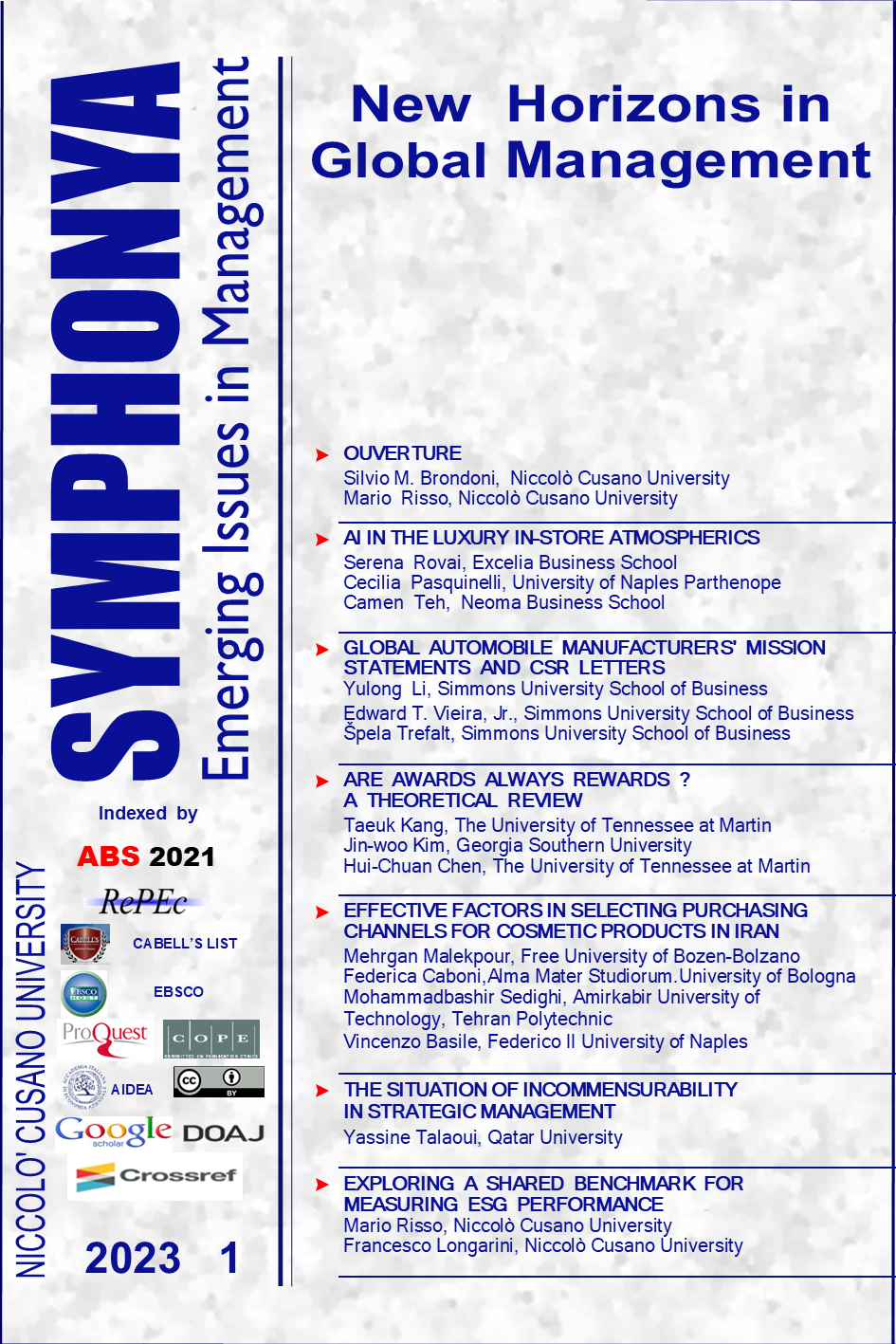AI in the Luxury In-Store Atmospherics
DOI:
https://doi.org/10.4468/2023.01.02rovai.pasquinelli.tehAbstract
Although the application of new-age technologies accelerated the orientation towards the online retailing journey in the pandemic context, the role of the physical store is still central in luxury shopping. The literature highlighted the growing impact of new-age technologies and Artificial Intelligence on consumer shopping experiences and retailing. Multiple factors are influencing luxury fashion and certainly technology changes are impacting clients’ behaviours and expectations. This study explores the critical impact of AI on in-store atmospherics, influencing the consumer in-store shopping experience. Cross-fertilising the DAST (Design, Ambient, Social and Trialability) model framing consumers’ experience with the growing literature on AI in retailing, this research empirically explores Chinese millennial consumers, a segment of tech-savvy consumers with a significant impact on global luxury markets. Based on 72 interviews with consumers and 12 interviews with luxury retail experts, this research elicits and discusses a set of factors framing the transversal role of AI in in-store atmospherics, framing its impact on the customer shopping experience. The study concludes by opening future research streams and critical appraisal of AI’s transformational impacts on luxury retailing.
Downloads
Published
How to Cite
Issue
Section
License
Copyright (c) 2023 Symphonya. Emerging Issues in Management

This work is licensed under a Creative Commons Attribution 4.0 International License.
The authors retain all rights to the original work without any restrictions.
License for Published Contents

You are free to copy, distribute and transmit the work, and to adapt the work. You must attribute the work in the manner specified by the author or licensor (but not in any way that suggests that they endorse you or your use of the work).
License for Metadata

Symphonya published articles metadata are dedicated to the public domain by waiving all publisher's rights to the work worldwide under copyright law, including all related and neighboring rights, to the extent allowed by law.
You can copy, modify, distribute and perform the work, even for commercial purposes, all without asking permission.



